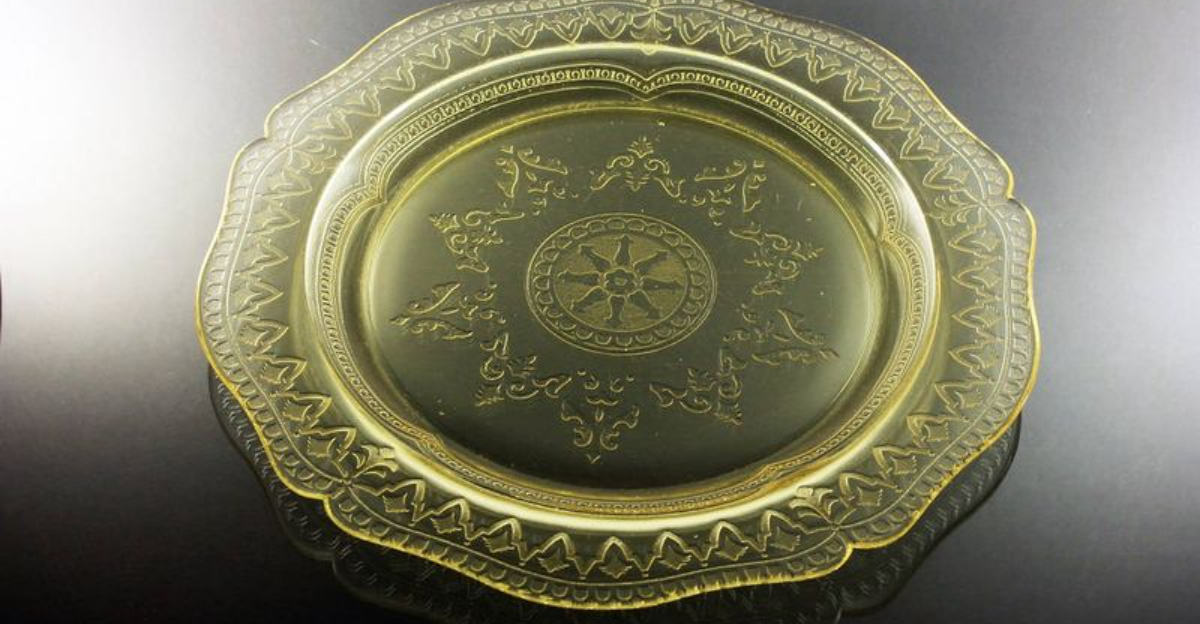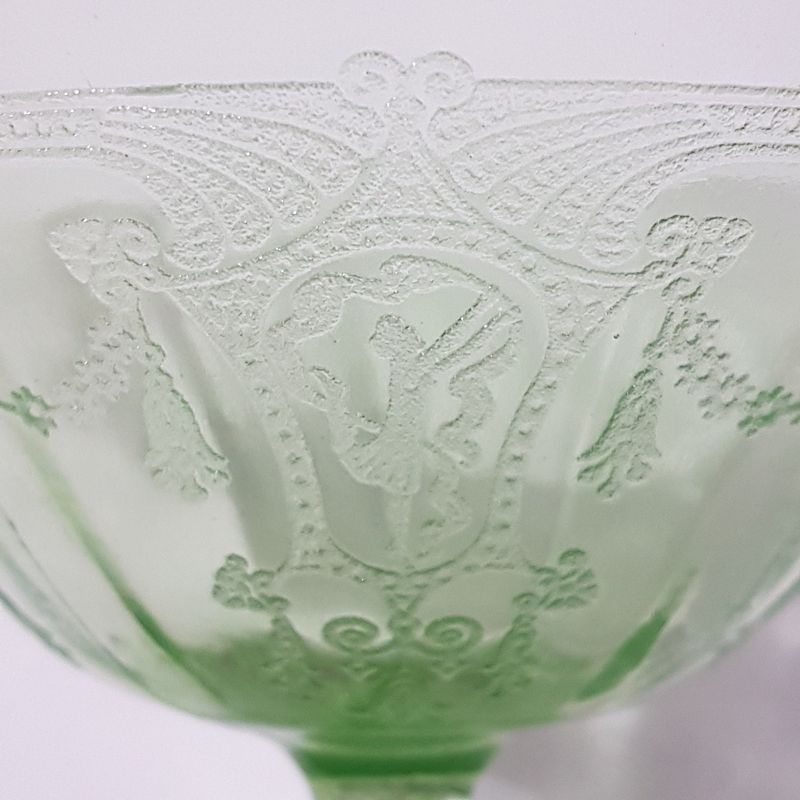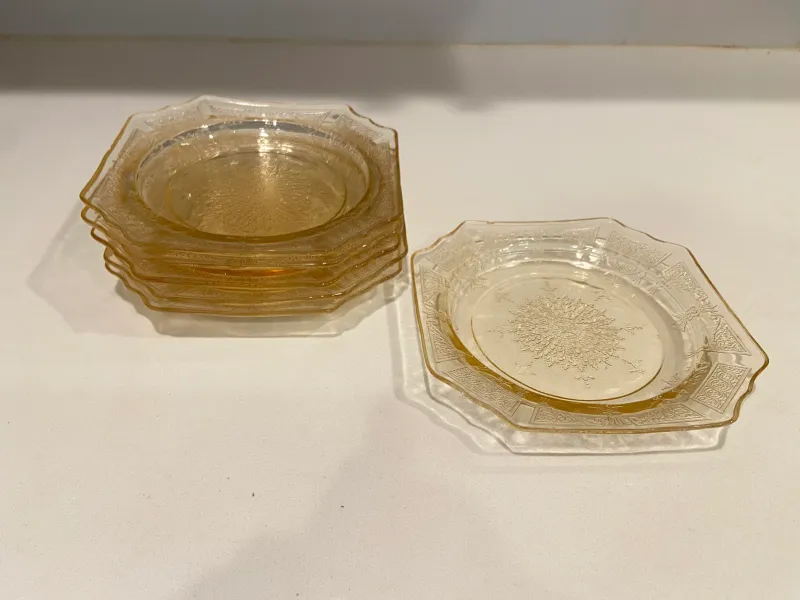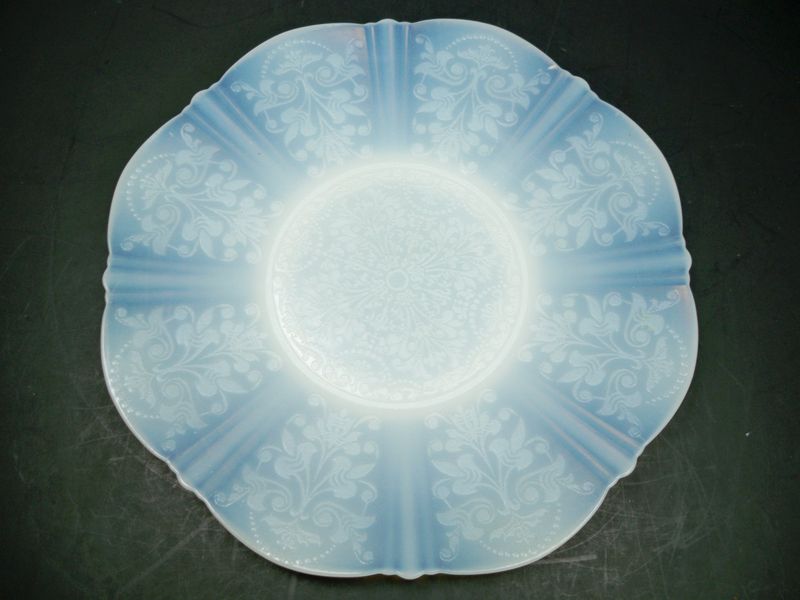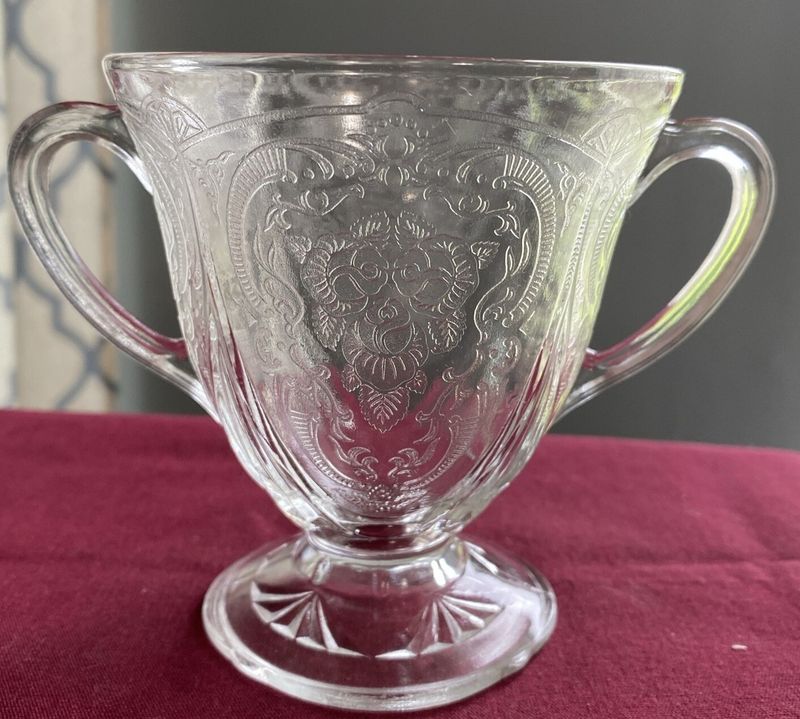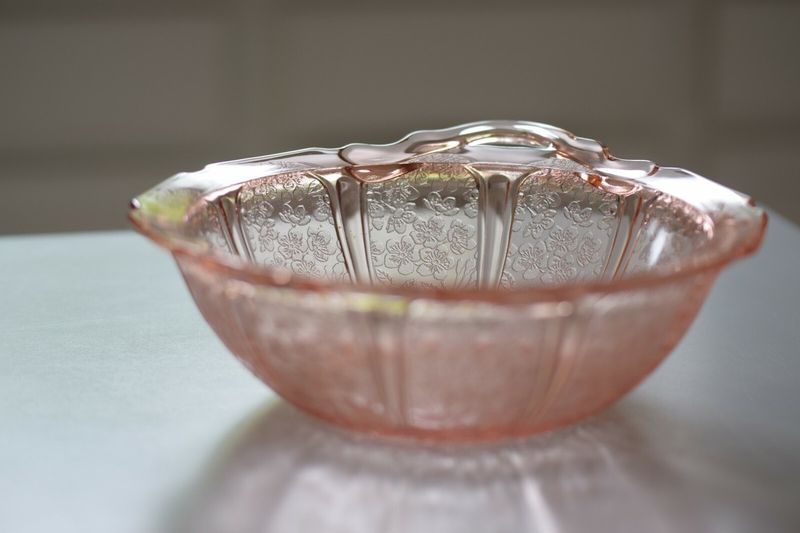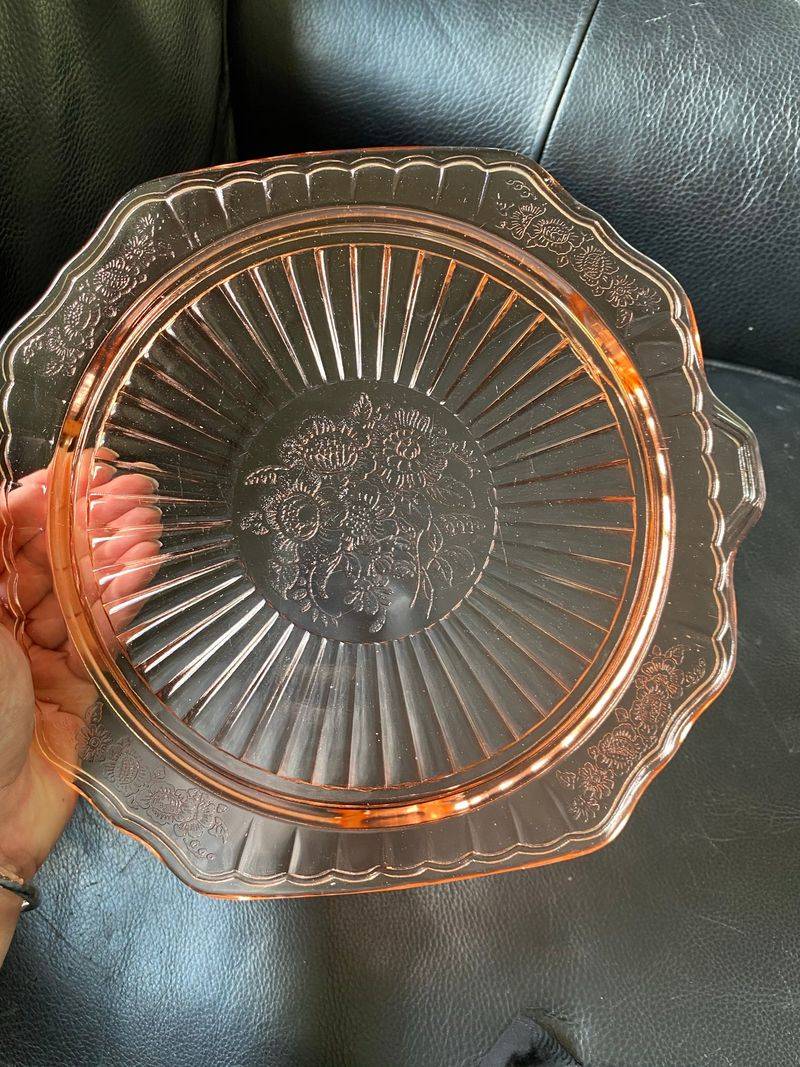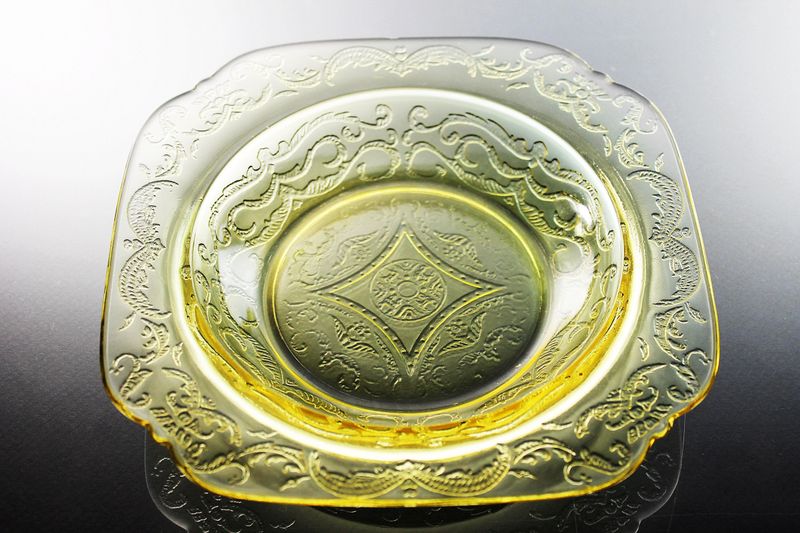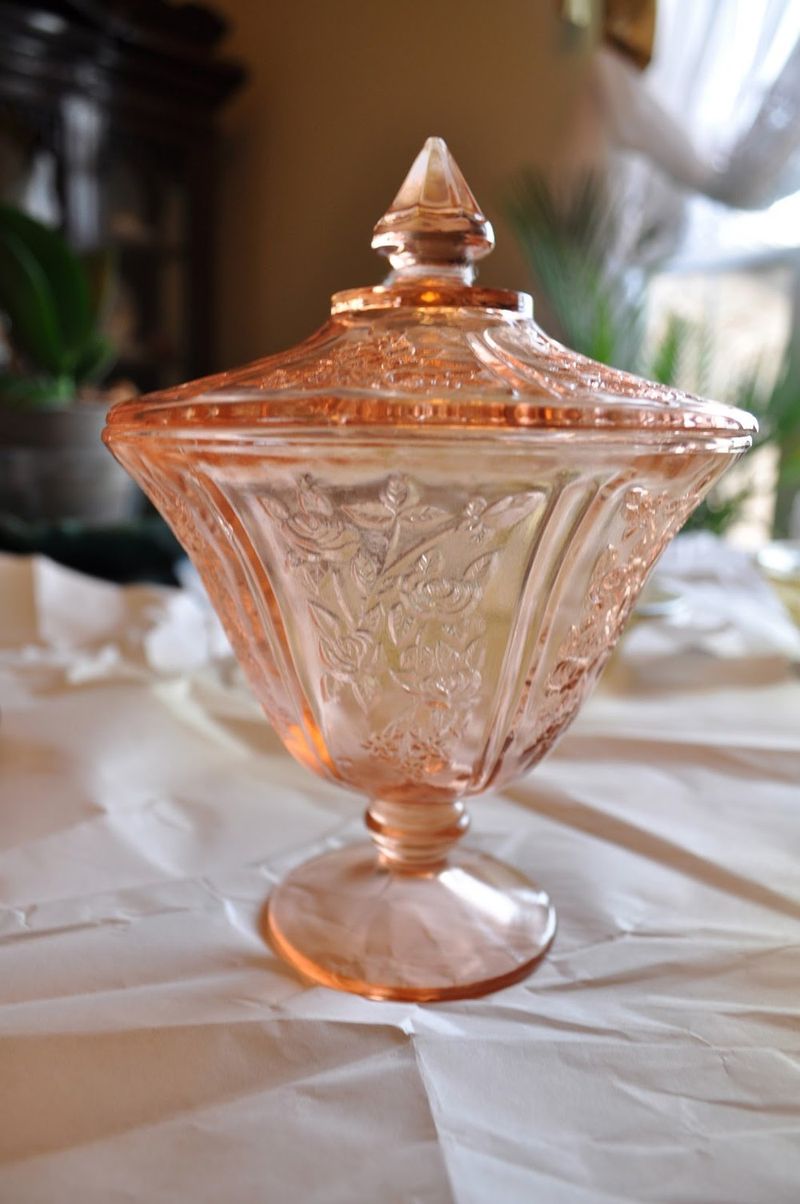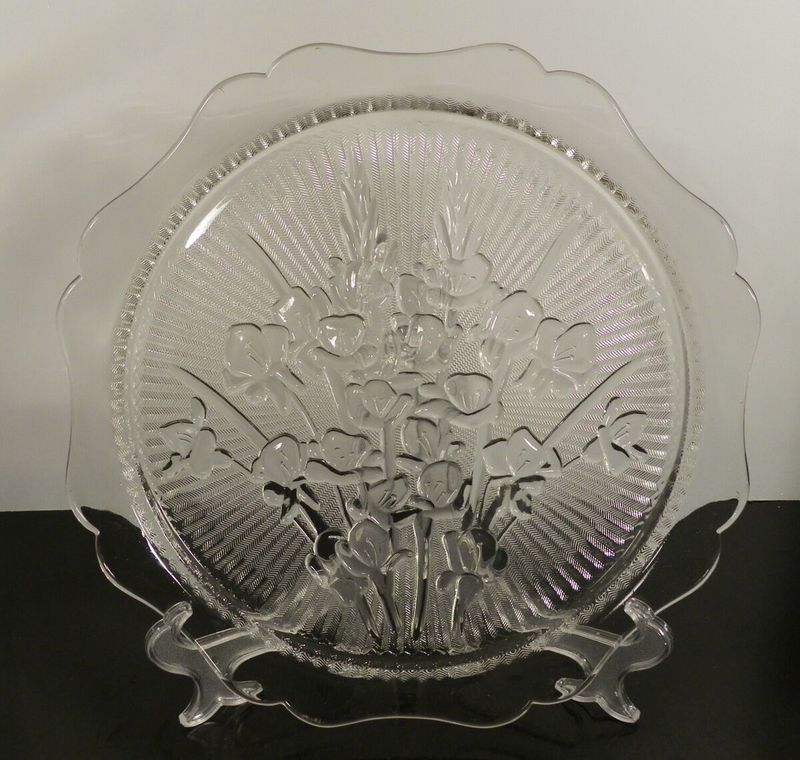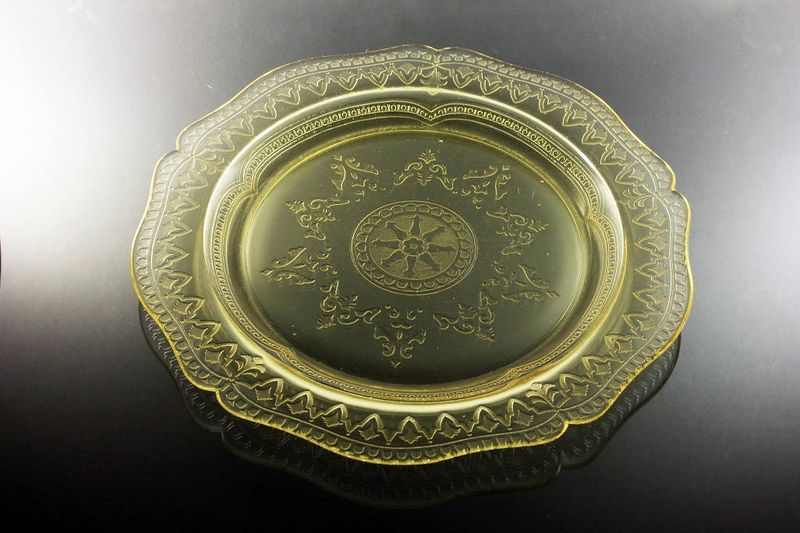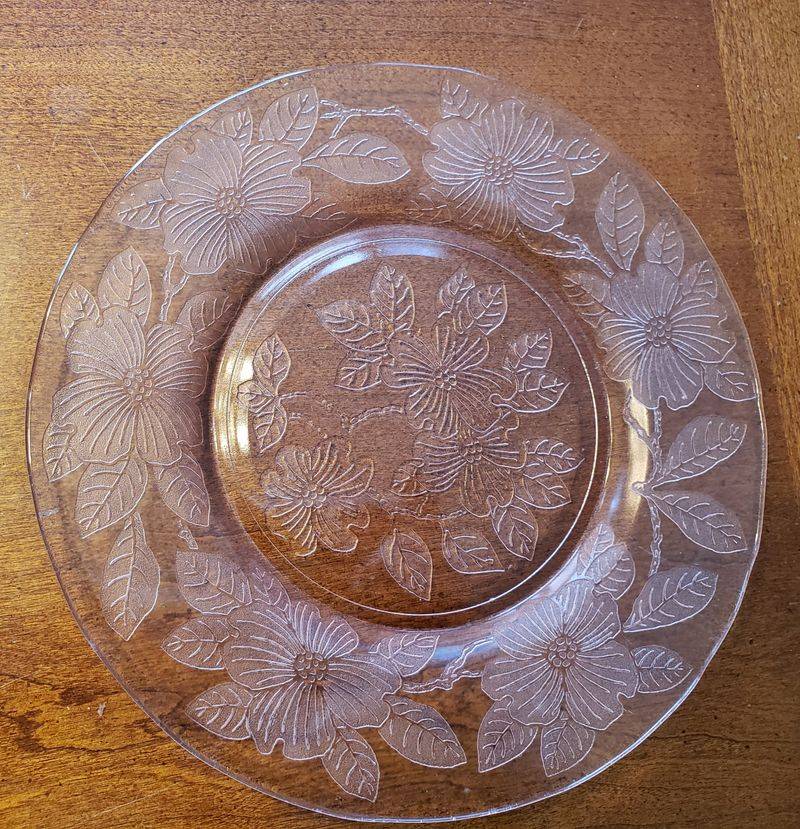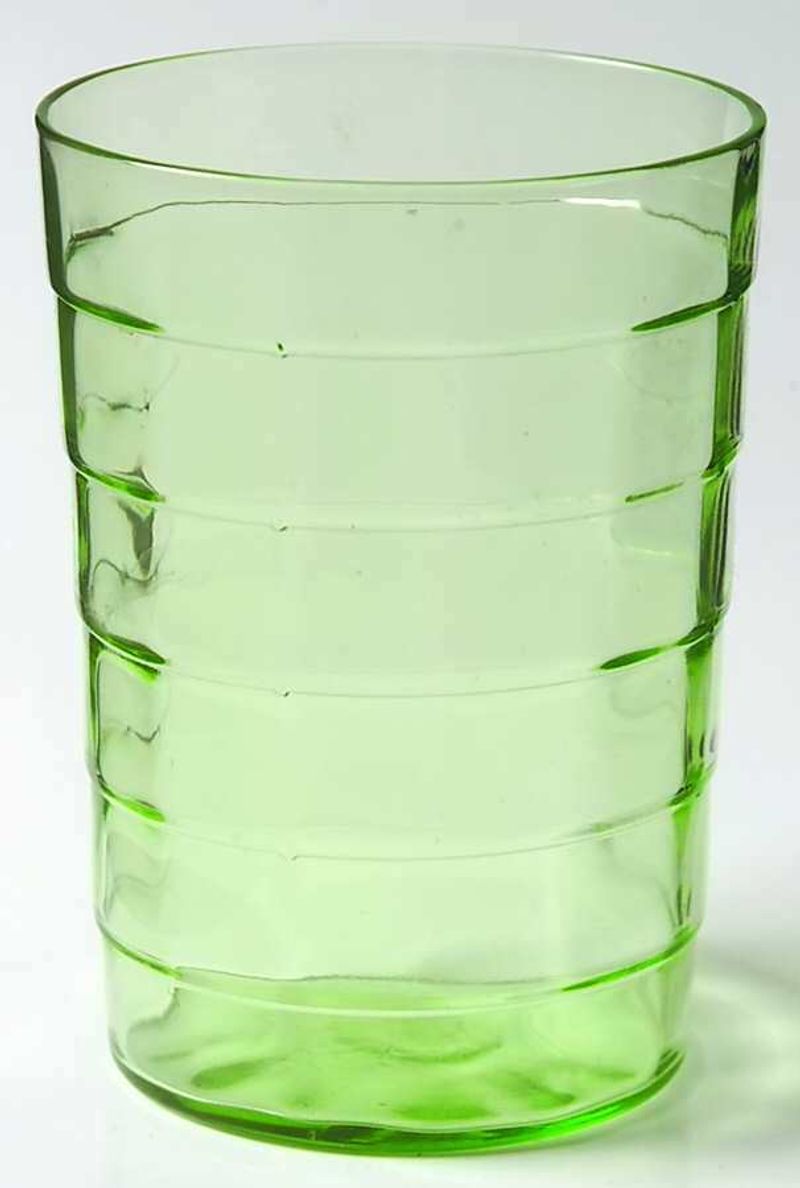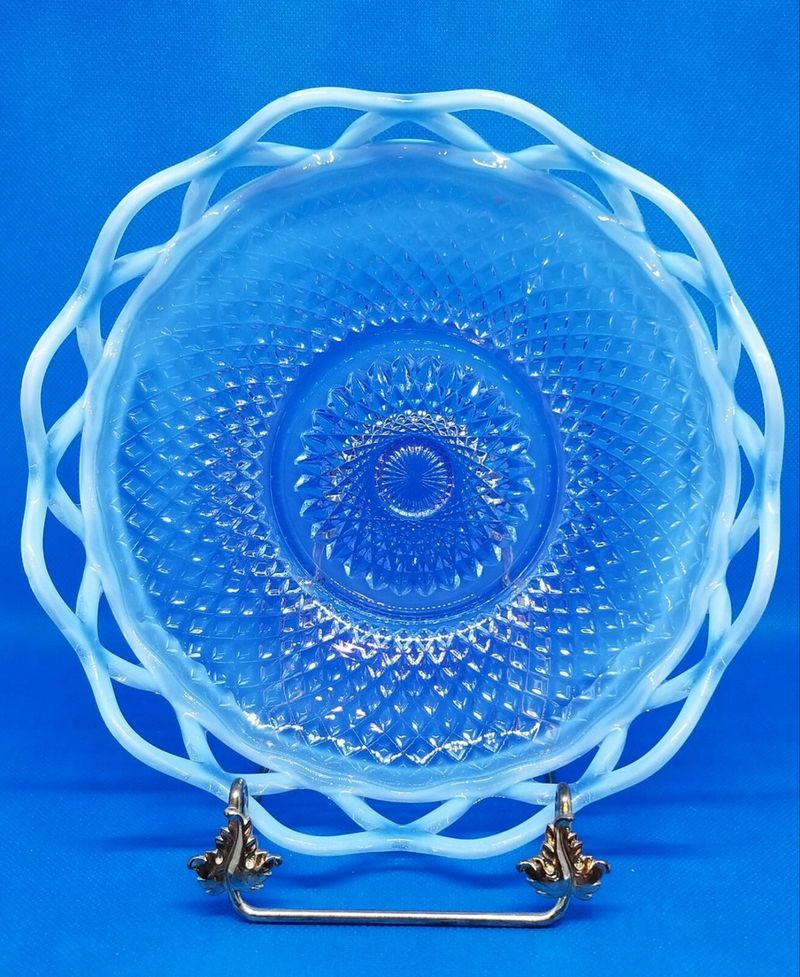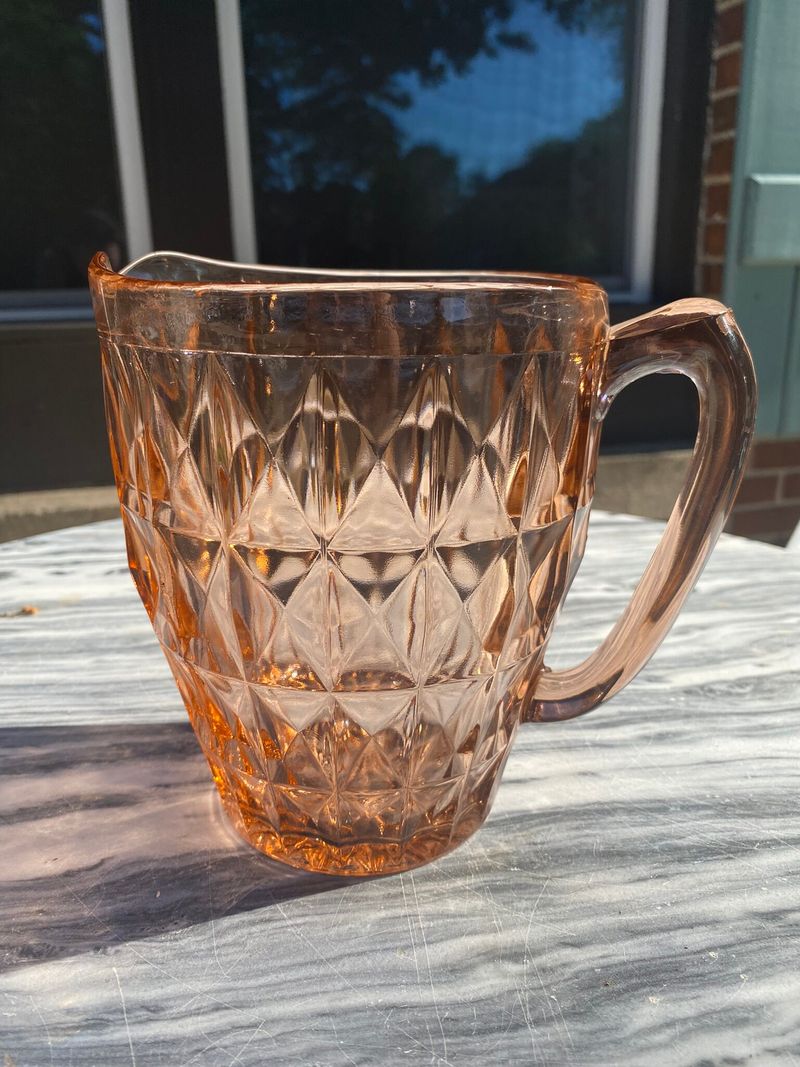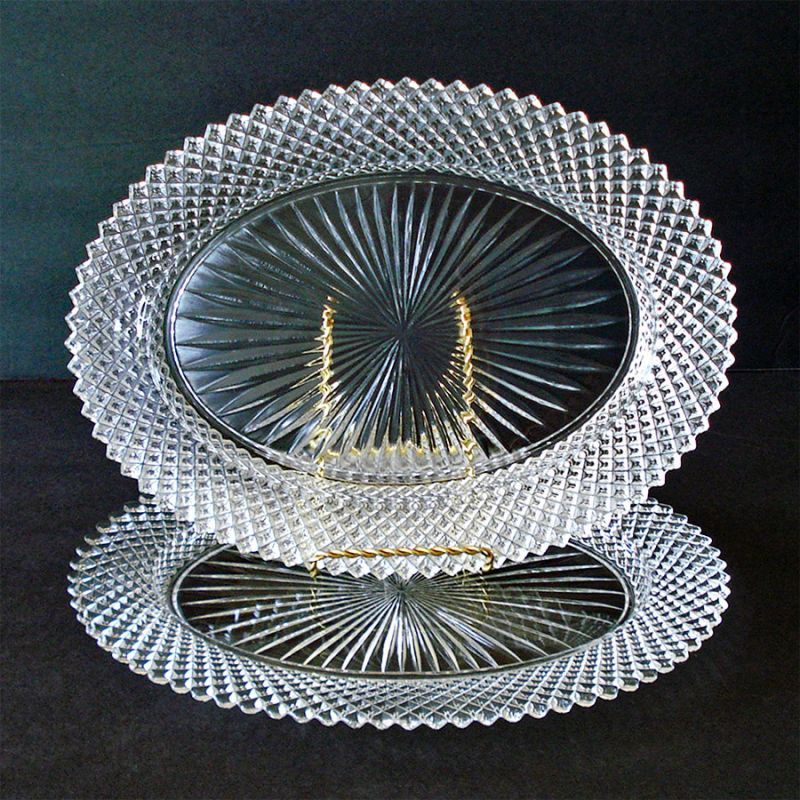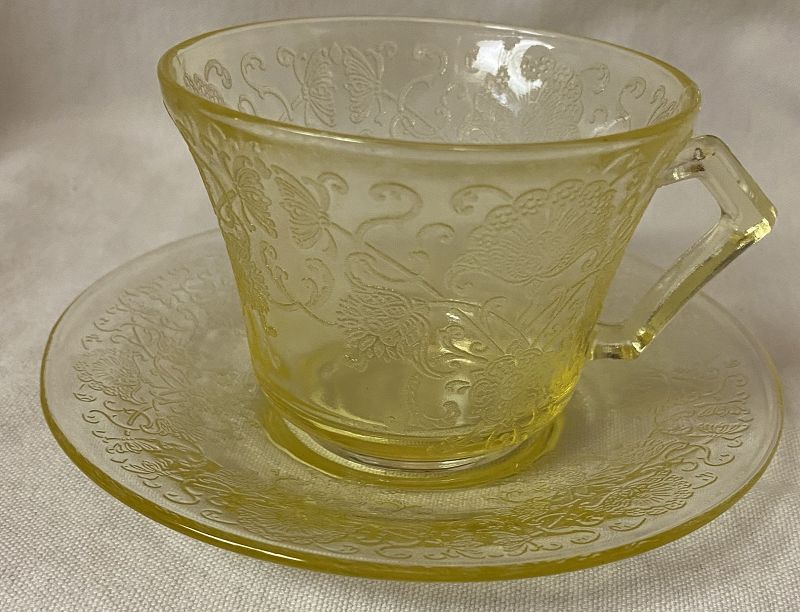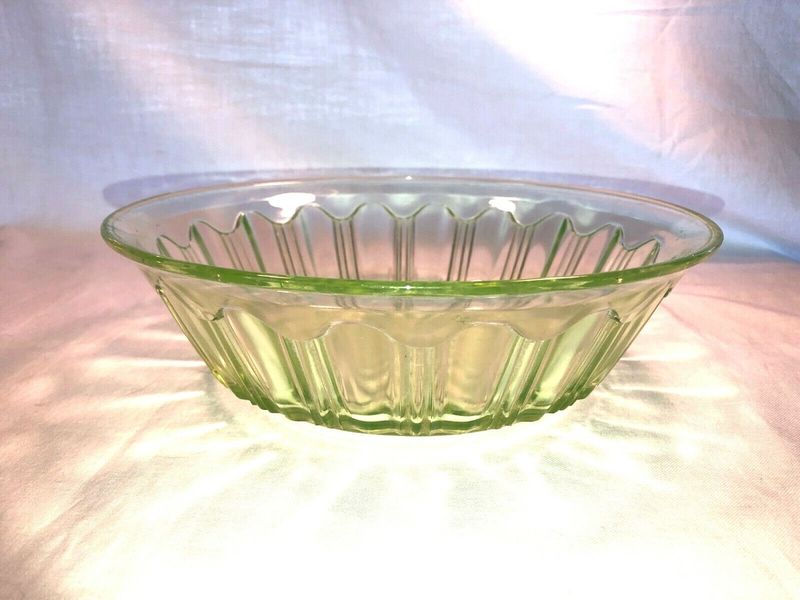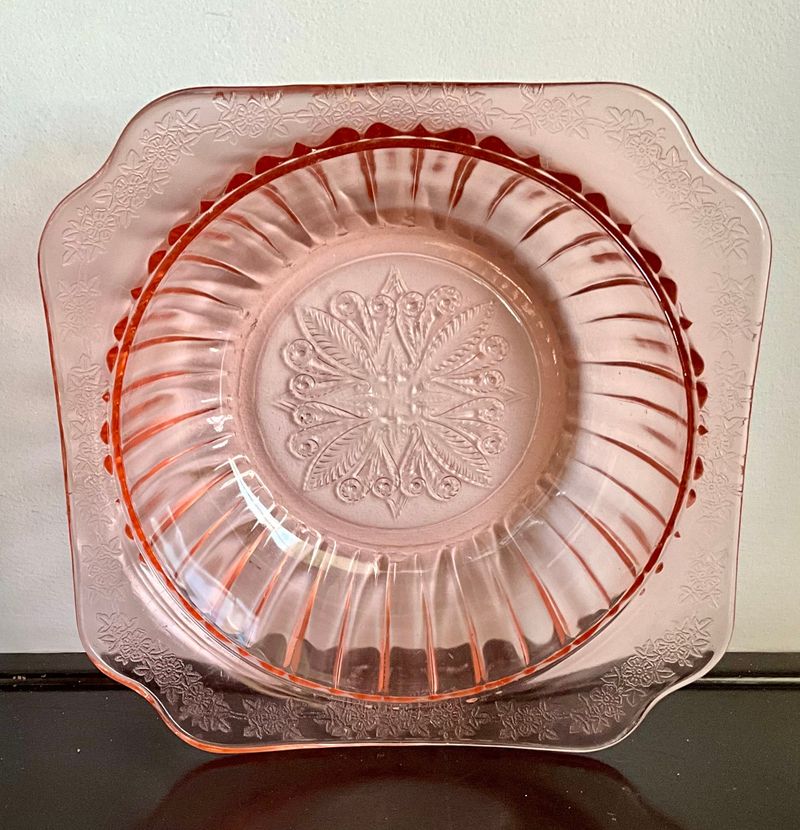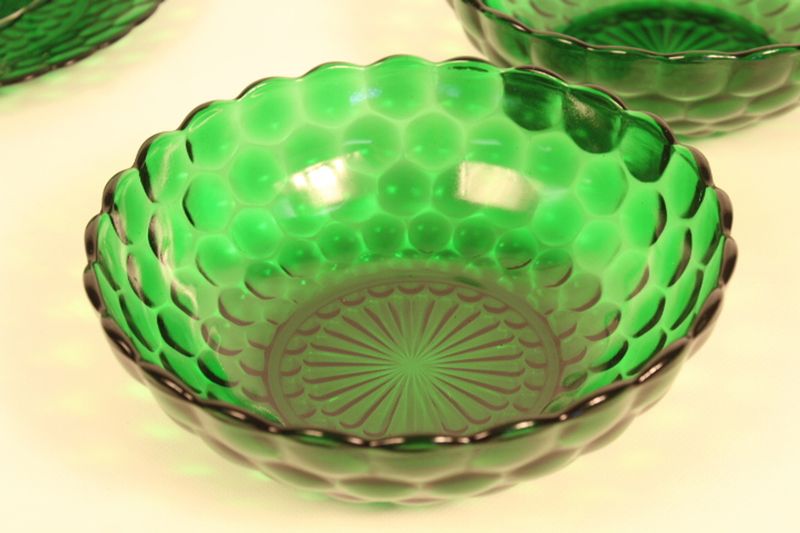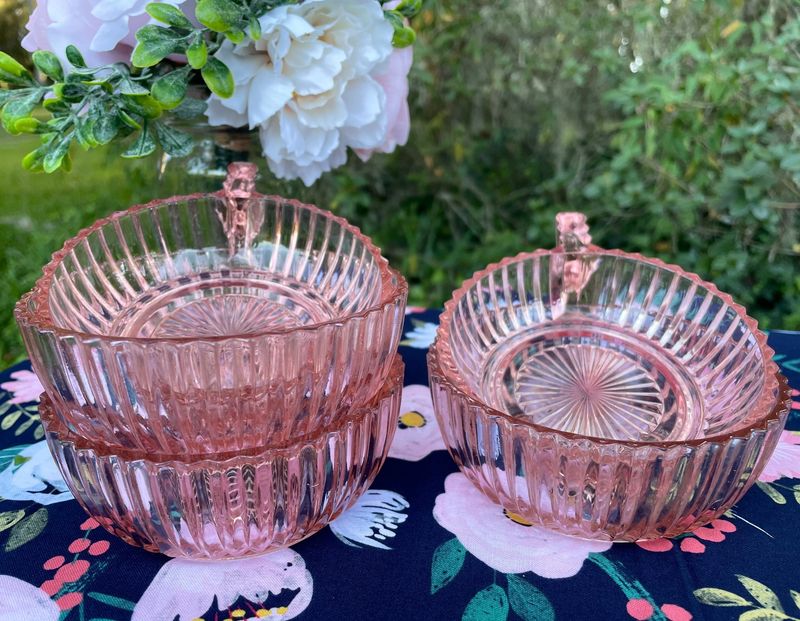Hunting for Depression Glass at thrift stores can be like finding hidden treasure.
These colorful glass pieces, made during the 1920s and 1930s, were often given away as promotional items during the Great Depression.
Today, collectors eagerly search for these vintage patterns that can be worth serious money if you know what to look for.
1. Cameo
Ever spotted delicate dancing ballerinas etched into glass? That’s the hallmark of the Cameo pattern, produced by Hocking Glass Company from 1930 to 1934.
The soft green and pink hues are particularly sought after by collectors. Most pieces feature a distinctive raised design with graceful dancers and flowers that catch the light beautifully.
Complete dinner sets are rare finds, making individual pieces valuable additions to any collection.
2. Princess
Royalty among Depression glass patterns awaits lucky thrift store shoppers. Manufactured by Hocking Glass from 1931 to 1934, Princess pattern comes primarily in a lovely yellow-amber shade.
What makes this pattern special is its geometric honeycomb design with smooth panels. The scalloped edges add an elegant touch that elevates even simple table settings.
3. American Sweetheart
Nothing says vintage Americana quite like this pattern! MacBeth-Evans produced American Sweetheart from 1930 to 1936, creating pieces that perfectly capture the era’s optimistic design sensibilities.
Distinguished by its scalloped edges and delicate floral motifs, this pattern typically appears in soft pink or creamy white. The monax white version has a distinctive opalescent quality that glows under light.
Cup and saucer sets are particularly prized finds at thrift stores.
4. Royal Lace
A crown jewel among collectors, Royal Lace was produced by Hazel Atlas between 1934 and 1941. Its intricate lace-like pattern surrounding the rim creates a truly regal appearance.
While cobalt blue pieces exist, they’re exceedingly rare. Most Royal Lace comes in a clear crystal or delicate blue-green shade that catches light beautifully.
The pattern’s popularity means reproductions abound, so look for authentic pieces with slight variations in the lace pattern.
5. Cherry Blossom
Spring eternally blooms in this beloved pattern! Jeannette Glass Company created Cherry Blossom between 1930 and 1939, featuring delicate cherry branches with tiny blossoms and fruit.
Pink pieces remain the most recognized, though green, yellow, and crystal versions also exist. The pattern wraps around each piece, with raised cherry designs that provide wonderful tactile appeal.
Cookie jars and candy dishes in this pattern can fetch impressive prices when found in good condition.
6. Mayfair
Imagine stumbling upon a piece of glass that tells the story of 1930s elegance! Hocking Glass Company’s Mayfair pattern (1931-1937) features an open rose design that wraps around each piece.
The most desirable color is a vibrant blue nicknamed “sapphire,” though pink versions also command attention. Its detailed floral pattern combined with geometric elements especially makes it stand out.
Large serving pieces like cake plates are particularly valuable finds at thrift stores.
7. Madrid
Spanish-inspired elegance defines this striking pattern! Federal Glass Company produced Madrid from 1932 to 1939, creating a bold geometric design that stands out from more delicate patterns.
The amber color is most commonly found, with its warm honey tones enhancing any display. Blue and pink versions are rare treasures worth grabbing immediately if spotted.
Look for the distinctive medallion-like circles connected by lines—a hallmark of authentic Madrid pieces.
8. Sharon
Nicknamed “Cabbage Rose” by collectors, this Federal Glass pattern (1935-1939) features gorgeous roses and ribbons that evoke vintage romance. The pink variety remains most coveted, though amber pieces also turn up occasionally.
What makes Sharon special is its elaborate floral design combined with a scalloped edge. Each piece feels substantial in hand, with the pattern extending across the entire surface.
9. Iris and Herringbone
Jeannette Glass Company created this distinctive pattern between 1928 and 1932, combining floral and geometric elements. The crystal clear glass showcases a herringbone texture with iris flowers at intersecting points.
Unlike colored Depression glass, this pattern’s beauty comes from its intricate pressed design rather than tinting. Light catches the pattern beautifully, creating sparkle even in simple pieces.
Watch for the tell-tale combination of diamond shapes with floral medallions to identify authentic pieces.
10. Patrician
Affectionately called “Spoke” by some collectors, Federal Glass Company’s Patrician pattern (1933-1937) features a wheel-like design radiating from the center of each piece. The amber version appears most frequently, though yellow pieces occasionally surface.
This pattern is very distinctive thanks to its combination of Art Deco influences with practical durability. The spokes create a sunburst effect when light passes through.
11. Dogwood
Floral elegance blooms eternally in this MacBeth-Evans pattern produced from 1930 to 1934. When holding a Dogwood piece up to light, you’ll see delicate flowering branches etched across the surface.
The pink version remains most cherished by collectors, though blue and green pieces command higher prices due to rarity. The design features realistic dogwood blossoms with distinctive four-petal flowers.
12. Block Optic
Geometric simplicity defines this versatile pattern made by Hocking Glass from 1929 to 1933. The design features raised square blocks arranged in neat rows around each piece.
Green is the most frequently encountered color, though pink, yellow, and crystal versions also exist. What makes Block Optic special is its clean lines that complement any table setting.
13. Open Lace
Delicacy personified! Imperial Glass produced this ethereal pattern from 1932 to 1939, featuring a lace-like edge that appears almost too fragile to be practical.
The green version (often called Cactus) is most common, while pink pieces are treasured rarities. Each piece showcases an intricate border that resembles handmade lace with geometric precision.
14. Windsor
Jeannette Glass Company created this regal pattern between 1936 and 1946, featuring diamond-shaped buttons connected by fine lines. The design creates a sophisticated network across each piece.
Pink Windsor pieces are particularly coveted by collectors for their soft rosy glow. Light plays through the raised diamond shapes, creating sparkle from any angle, making it even more stunning.
15. Miss America
Patriotic collectors treasure this Hocking Glass pattern produced from 1935 to 1937. Unlike many Depression patterns, Miss America features a distinctive crystal clear design with sharply defined geometric elements.
The pattern showcases square blocks with fan-like designs at each corner. When light hits these pieces, they practically sparkle with American pride!
Serving pieces like large bowls and platters are especially valuable finds that can transform an ordinary thrift store visit into a triumphant treasure hunt.
16. Florentine
Nicknamed “Poppy” for its floral design, Hazel Atlas created this cheerful pattern between 1932 and 1935. The yellow version appears most frequently, glowing like captured sunshine on any table.
What makes Florentine special is its embossed poppy flowers with detailed petals and leaves. The pattern creates a textured surface that’s both beautiful and functional.
Cup and saucer sets are particularly charming finds that make perfect display pieces for any Depression glass collection.
17. Colonial
Historical charm defines this Hazel Atlas pattern produced from 1934 to 1936. When examining Colonial pieces, you’ll notice the distinctive knife-edge ribbing along the borders.
The green version is most commonly encountered, though pink pieces command higher prices when found. The pattern’s simplicity makes it versatile enough to mix with other Depression glass patterns.
18. Adam
Jeannette Glass Company’s Adam pattern (1932-1934) exemplifies Art Deco elegance with its clean lines and distinctive ribs. The pink version remains most sought after, though green pieces also appear occasionally.
Its vertical ribbing combined with horizontal bands create a sophisticated grid pattern. Each piece has substantial weight and presence despite its delicate appearance.
19. Bubble
Playful circles dance across this whimsical pattern made by Anchor Hocking from 1934 to 1965. The green version appears most frequently, though blue pieces are rare treasures worth grabbing immediately.
True to its name, the pattern features rows of raised bubbles or circles that create both visual interest and tactile appeal. The long production run means Bubble pieces are relatively common thrift store finds.
20. Queen Mary
Regal elegance defines this pattern produced by Hocking Glass from 1936 to 1949. The pink version is most coveted, though crystal clear pieces are more commonly encountered at thrift stores.
Named after the famous ocean liner, Queen Mary features vertical ribs with scalloped edges that create a crown-like appearance. The pattern’s extended production run means pieces are relatively accessible to new collectors. Berry bowls and dessert sets make charming additions to any Depression glass collection.

